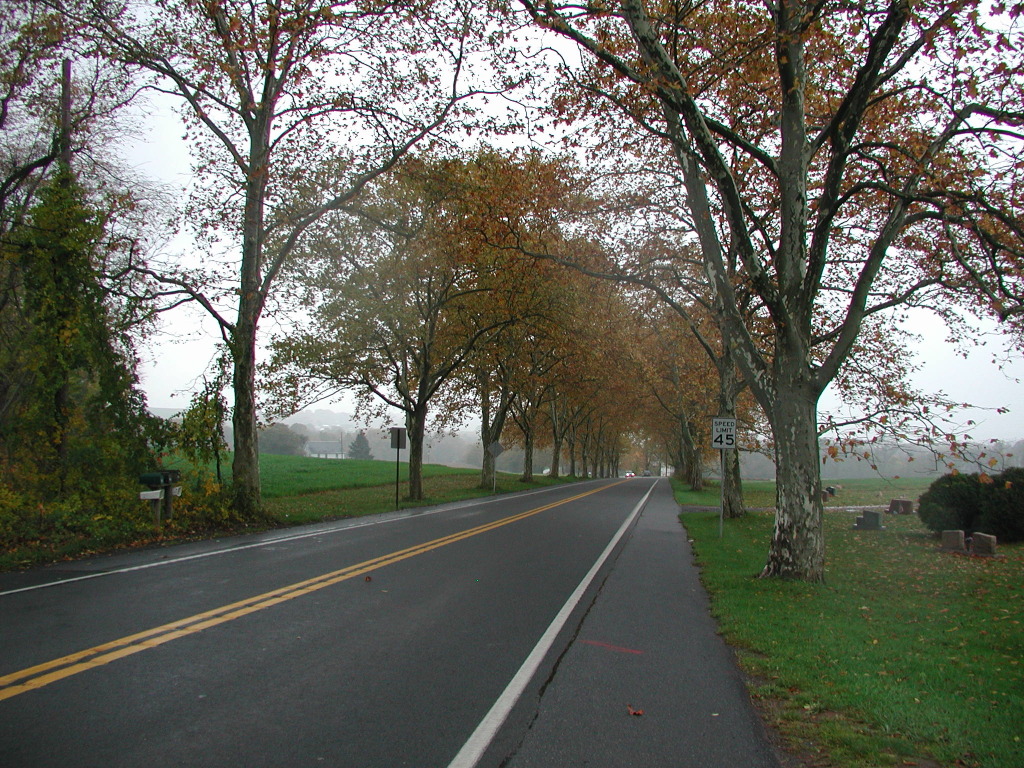Over the past several years the Pennsylvania Historical and Museum Commission has developed an innovative partnership with the Pennsylvania Department of Transportation (PennDOT) and the Federal Highway Administration (FHWA) to provide regional Metropolitan Planning Organizations (MPOs) and Rural Planning Organizations (RPOs) with free technical assistance to help them develop their Long Range Transportation Plans (LRTP). Supported by funding from FHWA, the goal is to encourage these planning organizations to integrate cultural resources and historic preservation issues into their transportation planning.
All projects receiving funding from PennDOT and FHWA must comply with the provisions of Section 106 of the National Historic Preservation Act and Section 4(f) of the U.S. Department of Transportation Act. Few, if any, MPOs have staff members with a background in historic preservation, and they do not want to spend their limited resources on professional consultants. That’s where the Historic Preservation Office staff can help. We have the necessary experience to help them:
- locate known resources
- identify those historic resources that have not yet been documented
- explain the implications for the Section 106/environmental review process
- suggest alternatives to avoid, minimize, or mitigate the effects of transportation projects proposed by the MPO.
In most states, the Department of Transportation (DOT) consults with their State Historic Preservation Office (SHPO) only when projects are already planned and many of the design decisions have been made. By that point in the process, the DOT is often reluctant to consider alternatives in the project’s design or alignment, and little time is left in the schedule for exploring creative mitigation strategies. That’s why Pennsylvania is breaking new ground with this initiative. By carefully considering historic and archaeological resources during the long-range planning stage, planners and engineers can address the challenges associated with these resources before a project reaches the design phase. And that can reduce the time and money that are often involved when a project will have an effect on cultural resources. In fact, the PA Historic Preservation Office was the only SHPO represented on a National Cooperative Highway Research Program committee that studied the coordination of Section 106 and long range transportation planning.
In recent years, the staff has offered a range of services to tailor its assistance to best suit the local MPO’s needs in developing their LRTP. In some cases, one of the Historic Preservation Office’s regional community preservation coordinators met with the MPO staff and reviewed a draft transportation plan. Typically we offer suggestions on how to identify cultural resources in their transportation corridors and how to anticipate the types of concerns that might come up in areas with concentrations of historic buildings, farms, or potential archaeological sites.
However, in other MPO regions the staff has taken a more active approach:
-
Lancaster County – Our team met with the MPO and Planning Commission staff on a regular basis as part of a Heritage Working Group. This Group revised and updated the LRTP’s strategies and action steps to better support the county’s Heritage and Strategic Tourism plans, and together we outlined a process for evaluating mitigation alternatives.
- York County – In York we provided preliminary comments on historic resources that might be affected by bridge replacements or by improvements to the county’s congested corridors and intersections.
- Lebanon County – Here our staff presented a workshop on historic preservation planning for municipal staff members, including a work session to help them develop a list of locally important resources.
One of the key benefits of this initiative has been to lay the foundation for an ongoing relationship between our office and the MPO staff, so that they know who to contact when they have questions or concerns about historic places. In one instance, representatives from the Lancaster County Planning Commission and the PHMC met with PennDOT engineers to make recommendations on the design of a proposed replacement bridge. Even though the 1926 concrete bridge is not considered to be significant, it is along one of the County’s Heritage Byways. As a result of these meetings, the new bridge’s railing is being designed to reflect the traditional appearance of concrete railings used on early 20th century bridges.
In 2015, long range transportation plan updates are due for five counties or regions:
- Altoona
- Johnstown
- Scranton/Wilkes-Barre
- Southwestern Pennsylvania
- Shenango Valley
The Historic Preservation Office staff looks forward to working with transportation planners at these MPOs and fostering their awareness of local historic properties and archaeological sites. In the long run, this should only make everyone’s jobs easier when PennDOT and the local community are ready to plan a highway improvement or bridge replacement project. Long Range Transportation Planning places a priority on public involvement. For more information on how you can participate in the transportation planning process, contact your local MPO or RPO.
Comment Policy
PHMC welcomes and encourages topic-related comments on this blog. PHMC reserves the right to remove comments that in PHMC’s discretion do not follow participation guidelines.
Commenters and Comments shall be related to the blog post topic and respectful of others who use this site.
Commenters and Comments shall not: use language that is offensive, inflammatory or provocative (this includes, but is not limited to, using profanity, obscene, or vulgar comments); disparage other commenters or people; condone illegal activity; identify the location of known or suspected archeological sites; post personal information in comments such as addresses, phone numbers, e-mail addresses or other contact details, which may relate to you or other individuals; impersonate or falsely claim to represent a person or an organization; make any commercial endorsement or promotion of any product, service or publication.
If you would like to comment on other topics not related to this blog post but related to PHMC, please fill out the PHMC Contact Us Form.
